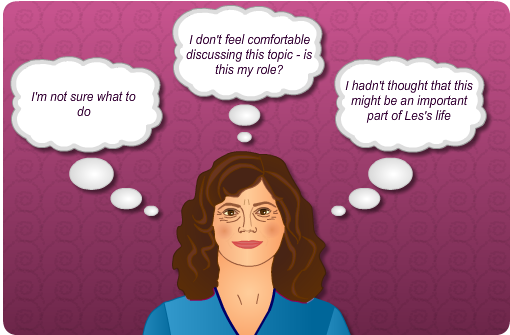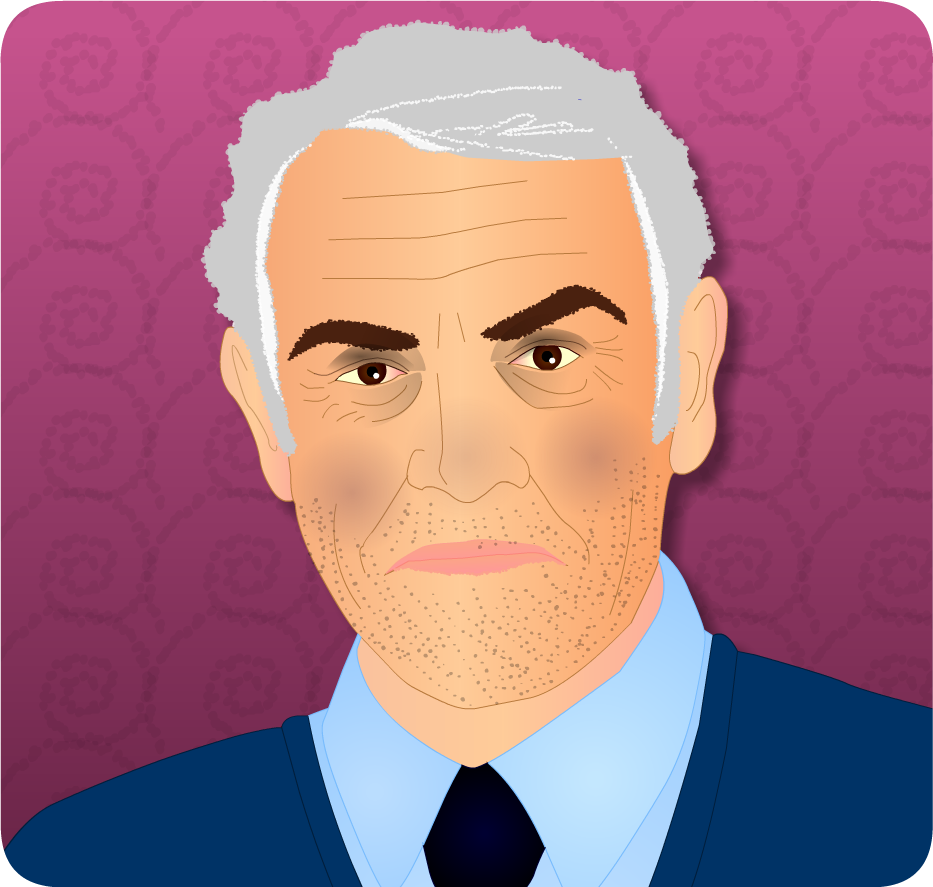
The second stage of the PLISSIT model looks at the practitioner giving Limited Information. Providing this Limited Information should be within the scope of the practitioner’s knowledge and would include dispelling myths, answering basic questions such as ‘Is it safe to have sex?’ and providing information such as leaflets, telephone numbers for helplines etc.
There are a number of physical factors which can affect sexuality and sexual activity after stroke. All members of the multidisciplinary team should be able to provide Limited information on these factors and be comfortable discussing these with an individual.

Giving permission to discuss sexual matters may involve simply creating a trusting and confidential relationship in which concerns can be raised. It is important to remember that raising the subject also allows the person to indicate that this is an area they do not wish to discuss, and this must be respected.

One model which can be easily applied to assessing and discussing sexuality in health care settings is the PLISSIT model.
| The PLISSIT Model |
| Level |
Description |
Permission
The practitioner brings up the topic of sexuality, thereby validating sexuality as a legitimate health issue and giving the client permission to discuss sexual concerns now and later in the programme. |
Most clients need permission to raise their sexual concerns. Although professionals may lack the confidence to discuss sexuality with their clients, the majority of them have adequate knowledge and skills to provide this level of service. |
Limited Information
The practitioner addresses specific sexual concerns and attempts to correct myths and misinformation. |
Much of a health professional’s knowledge and training can be applied to sexuality. At this level, the practitioner’s primary role is that of an educator and therefore should focus on basic sexual information applicable to their area of practice. Many clients would benefit from this level of intervention. |
Specific Suggestions
The practitioner compiles a sexual history with the client to:
- Determine the problem
- Determine cause of the problem
- Treat the problem – formulate ideas about causes and develop appropriate goals and treatment plans.
|
Fewer clients require this level of intervention, and fewer practitioners are qualified to provide this degree of service. The practitioner should possess counselling skills as well as appropriate information and treatment skills in order to provide treatment at this level. |
Intensive Therapy
The practitioner completes a full assessment of the clients sexual difficulties and formulates a treatment plan. |
This level requires specialist skills of a Psychologist, specialist counsellor or therapist specialising in sexual difficulties. |
| Ref: Adapted from Esmail S, Esmail Y, Munro B. Sexuality and disability: the role of health professionals in providing options and alternatives for couples. Sex disabil. Winter 2001; 19(4):276 |
Health professionals should:
- be aware that sexuality may be an important part of people’s lives and that they may be asked about sexual concerns
- be comfortable initiating discussion about sexuality at a basic level
- know where to get additional information/support for the individual if required
- be aware that evidence highlights 30% of people want information but only 8.2% received some (Prior et al 2019)
The therapist has used the ‘P’ part of the PLISSIT model as she has given Les permission to speak about and raise his concerns regarding sexual concerns.
We will now take each part of the PLISSIT model and explain/demonstrate how this can be used in practice.
Les has been on the stroke rehabilitation unit for 5 weeks. He has a right hemiplegia and is now mobile with some assistance. He has increased tone and limited right upper limb function but has no communication or cognitive problems.
Les is progressing well with his rehabilitation and has just returned from his first weekend pass.
Les’ wife Jean comes to visit daily.

Les is a 70-year old retired engineer. He lives with his wife Jean and they have been married for 45 years. They have 2 children and 7 grandchildren.
Les has a great sense of humour and a joke for every situation. Prior to his stroke both Les and his wife were fit and well, had a healthy diet and are not overweight. Their hobbies include travel, hill walking, golf and dancing. They have a number of friends they like to socialise with on a regular basis.
Les has no significant past medical history and prior to his stroke had never previously been in hospital. He was initially admitted to the acute stroke unit and then transferred to the rehabilitation stroke unit 2 weeks later.
- Sexuality is a complex and multi-dimensional concept covering the desire for sex, the sexual act and values and beliefs about sex.
- Sexuality is linked to one’s personality and identity.
- Sexuality has cultural, societal and religious influences.
- Sexuality means so many different things. For some it means close friendship and companionship, for others the opportunity to be physically tactile and for others the term equates to intercourse and making love.
References:
Kaiser, F.E. (1996) Sexuality in the elderly. Urological Clinics of North America, 23 (1): 99-109
Kamel, H.K. (2002) Sexuality in ageing: focus on institutionalised elderly. Annals of Long-Term Care 9(5): 64-72
Sexuality and ageing: Debunking the Myths factsheet (2015)
Weeks, Jeffery. (2002) Sexuality, New York: Routledge
WHO (2006a) Defining sexual health

What is sexuality?
On completion of this case scenario you should have an understanding of:
- Understanding the nature of sexual difficulties after stroke
- The need for health professionals to recognise that it is everyone’s role to provide some degree of information and support as appropriate







